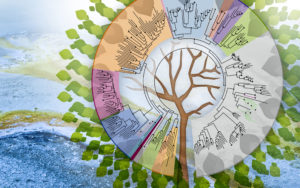
“Archaea Tree” courtesy of EMSL @ PNNL
April 5-6, 2017 – Marriott Hotel, Walnut Creek, CA
The workshop aims to foster discussions centered on how to capture, define, quantify, and functionally characterize microbial and viral diversity. It focuses on experimental innovations, computational advances, and other technological developments that will enable researchers to move from identification of microbial novelty to assigning metabolic and functional capabilities.
Keynote Speaker: Jill Banfield, UC Berkeley
After Dinner Speaker: Slava Epstein, Northeastern University
Agenda
Poster Session
Wednesday Evening Poster Session (docx)
Registration
Registration is now closed.
Lodging
Last day to book discounted lodging was March 16, 2017.
Walnut Creek Marriott (April 4 – April 6, 2017).
Overview of Workshop Goals
Metagenomic and single-cell sequence data have provided a means to access “microbial dark matter” (MDM), leading to a new appreciation for the extent of diversity. A bonanza of novel microbial lineages have recently been identified and we are currently challenged with how to define this novelty. Furthermore, we would like to move from cataloguing microbial diversity to experimental characterization and validation of the functional potential of these new lineages.
Day 1 will provide an overview of the bacterial and archaeal diversity catalogued to date and discuss approaches to define phylum-level novelty (morning session). Under the “sequence to function’ umbrella, the afternoon session will focus on computational approaches to characterize MDM and sequence novelty and the morning session on Day 2 will focus on experimental approaches to assign functional “read out” to sequence data. We will also discuss leveraging improved experimental design for enhanced biological interpretation, highlight experimental capacity through collaborations with EMSL and through the ETOP and close out with a brainstorming session on a community-driven large-scale CSP project focused on functional aspects of MDM.
JGI Organizers: Emiley Eloe-Fadrosh, Natalia Ivanova, Nikos Kyrpides, Rex Malmstrom, Adam Rivers, Tanja Woyke
External Co-Organizers: Jill Banfield, Jonathan Eisen, Phil Hugenholtz, Jennifer Pett-Ridge, Ramunas Stepanauskas, Matt Sullivan